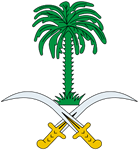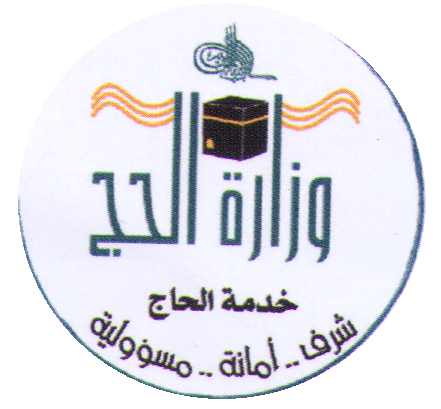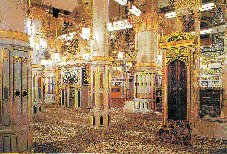


The building of the Prophet's Mosque
The Messenger of Allah (may peace be upon him) came to Madinah and stayed in the upper part of Madinah for fourteen nights with a tribe called the Banu 'Amr bin 'Awf. He then sent for the chiefs of the Banu Al-Najjar, and they came with swords around their necks. The Messenger of Allah (may peace be upon him) performed the Prayer when the time came for the Prayer, and he prayed in the fold of goats and sheep. He then sent for the chiefs of the Banu Al-Najjar, and they came (to him). He (the Holy Prophet) said to them: O Banu Al-Najjar, sell these lands of yours to me. They said: No, by Allah, we would not demand their price, but (reward) from the Lord. When the Prophet (peace be upon him) insisted on paying for the land, they accepted his offer. Then he ordered the mosque to be built. The Prophet's dwelling in Madinah was a simple structure built around a courtyard. In 628 CE, a minbar or raised pulpit was built. From this minbar, the Prophet would make the call to prayer and adjudicate in disputes. In 634 CE, when Prophet Muhammad (peace be upon him) directed that prayers should henceforth be made in the direction of Makkah, the wall of his dwelling which faced Makkah became the Qibla wall. Against this wall a roofed shelter was built. In this way, some key elements of future mosque architecture were established. Over the centuries, the size of the Prophet's Mosque has been greatly increased. Key dates, before the expansion initiated and implemented by the late King Fahd are given below:
- 622 - Mosque founded by the Prophet Muhammad (peace be upon him)- 805 square meters
- 629 - Expansion by Prophet Muhammad (peace be upon him) - 2,475 square meters
- 638 - Caliph Umar bin Al-Khattab - 3,575 square meters
- 650 - Caliph Uthman bin Affan - 4,071 square meters
- 706 - Caliph Al-Walid bin Abd al-Malik - 6,450 square meters. Caliph Al-Walid I destroyed the original brick buildings and created a new mosque on the site.
- 779 - Caliph Al-Mahdi Al-Abbasi - 8,900 square meters
- 1483 - Sultan Qaid Bey - 9,020 square meters
- 1849 - Sultan Abdul Majid - 10,193 square meters
- 1950 - King Saud - 16,327 square meters
